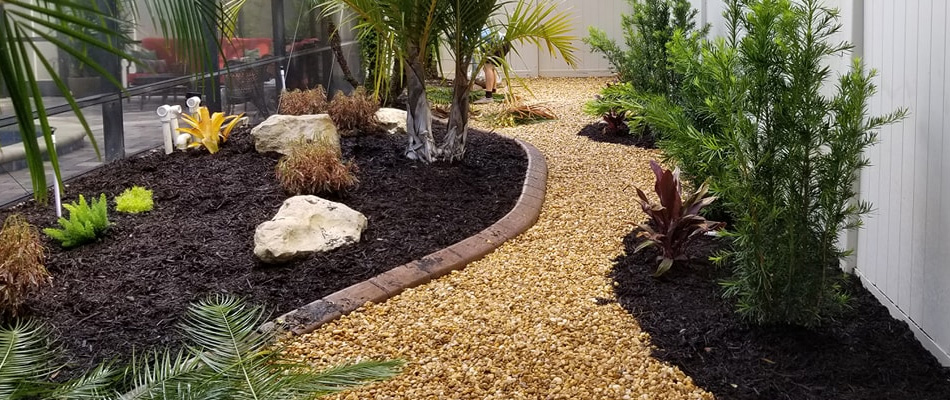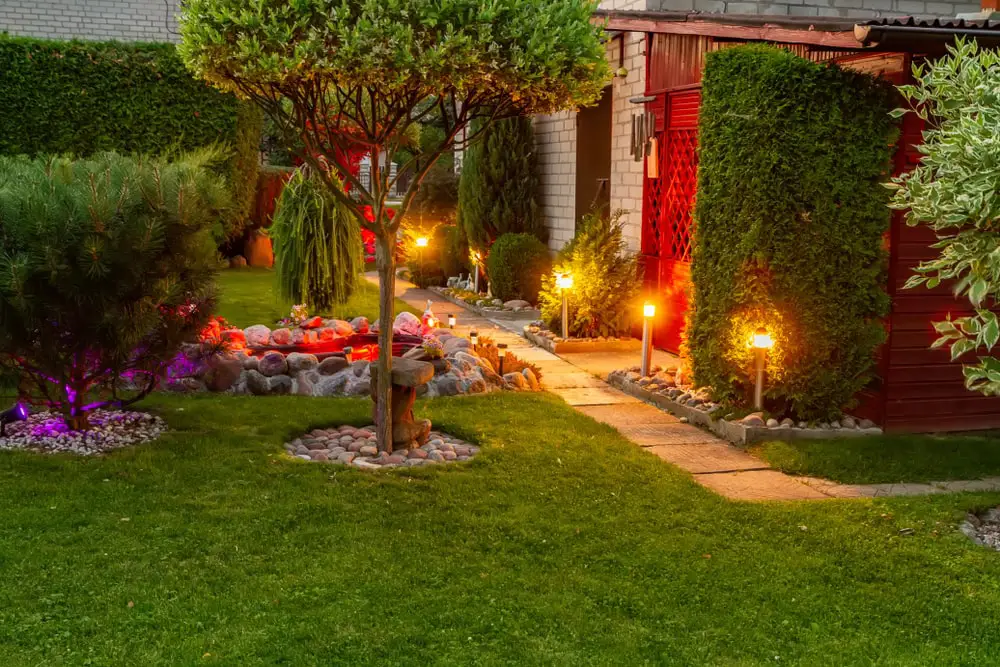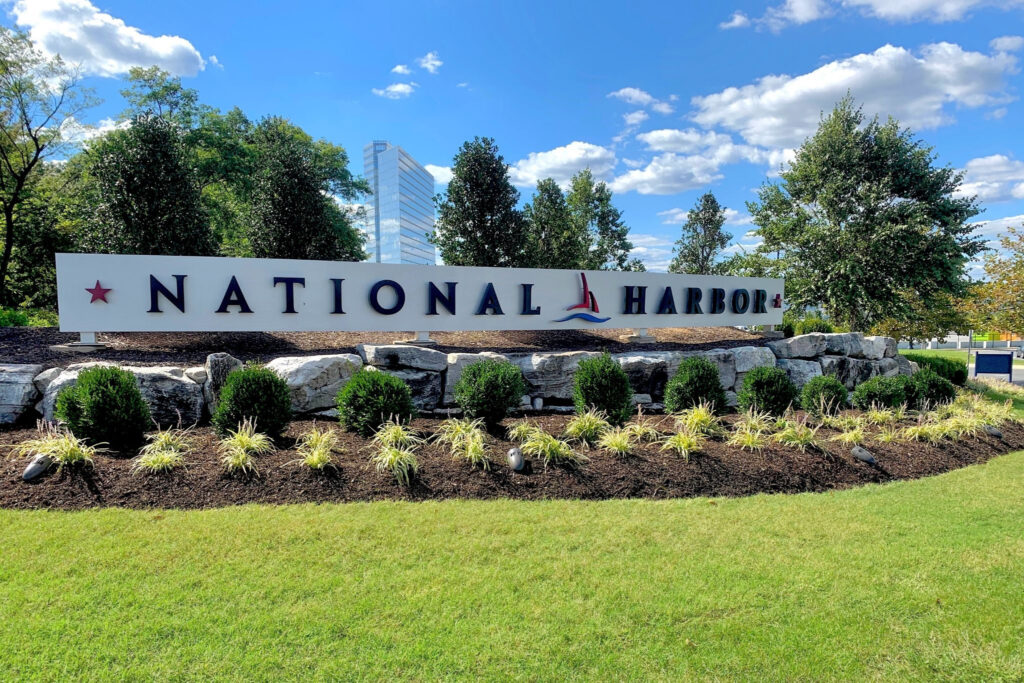How Hilton Head Landscapes can Save You Time, Stress, and Money.
Hilton Head Landscapes for Dummies
Table of ContentsThe Definitive Guide to Hilton Head Landscapes8 Simple Techniques For Hilton Head LandscapesThe 9-Minute Rule for Hilton Head LandscapesThe Greatest Guide To Hilton Head LandscapesHilton Head Landscapes Fundamentals ExplainedTop Guidelines Of Hilton Head LandscapesThe Ultimate Guide To Hilton Head LandscapesThe Only Guide for Hilton Head Landscapes
Type compatibility is likewise a significant element of unity in designone or 2 noticeably different types are excellent for comparison and emphasis, but typically all other kinds must have some similarities for a combined appearance. Appearance refers to just how coarse or fine the surface area of the plant or hardscape material really feels and/or looks.
Examples of plants with rugged texture include philodendrons, agaves, bromeliads, hollies, palms, and hydrangeas. Hardscape with rugged structure includes rough-cut stone, rough-finished brick, and incomplete wood with knots and an elevated grain. Matured or old construction material that maintains a weather-beaten surface is typically crude in appearance. Characteristics that create great appearance consist of tiny vegetation; slim, strappy fallen leaves (yards) or high, slim stems; small, dense twigs and small branches; long stems (creeping plants); and tiny, fragile blossoms.
9 Simple Techniques For Hilton Head Landscapes
Most plants are average appearance, in that they can not be described as having either coarse or fine appearance. Medium-textured plants act as a history to web link and unify the rugged- and fine-textured plants.

To make a space really feel smaller, place the crude structures along the outer border and the fine textures closest to the visitor. The information of the rugged texture makes the plants show up closer and makes the space really feel smaller sized. The perceived appearance of plants can likewise change with the range from the plant.
Not known Facts About Hilton Head Landscapes
Bold shades raise the contrast and make the appearance appear coarser, while soft shades can squash texture. Hardscape with a rugged texturesuch as really rough rocks and strong, huge timberstends to make all plant material appear more average distinctive. Designers often establish an appearance research study (Figure 8) theoretically to help determine the plan of plant products.
Number 8. Appearance research. Color in plant product and hardscape adds interest and variety to the landscape. Color is the most noticeable aspect in the landscape and is generally the emphasis of the majority of property owners; nevertheless, it is likewise the most short-lived component, generally lasting just a couple of weeks a year for specific plants.
Hilton Head Landscapes Things To Know Before You Get This
A basic description of the shade wheel includes the 3 main shades of red, blue, and yellow; the three second colors (a mix of 2 primaries) of eco-friendly, orange, and violet; and 6 tertiary colors (a mix of one surrounding main and second color), such as red-orange. Shade theory clarifies the connection of shades to each various other and exactly how they need to be made use of in a structure.

Analogous (sometimes called unified) color plans are any kind of 3 to 5 shades that are adjacent on the color wheel, such as red, red-orange, orange, yellow-orange, and yellow, or blue, blue-violet, and violet (Landscapers near me). The shades are associated to every various other since they typically include two primaries mixed to form an additional and 2 tertiary colors, which implies they share usual residential properties
They tend to have high contrast between them. The most common collections are violet and yellow, red and green, and blue and orange. Corresponding shades are usually located normally in flowers; a common set is yellow and violet. Shade is discovered in the flowers, foliage, bark, and fruit of plants.
What Does Hilton Head Landscapes Mean?
Eco-friendly foliage in all its numerous shades is the leading color by quantity, yet other colors capture interest extra conveniently as a result of their high comparison to the shade eco-friendly. Shade is likewise located in structures, rocks, pavers, timber, and furniture. The majority of colors in natural materials, such as stone and timber, are typically muted and have a tendency to be variations of brown, tan, and pale yellow.
Colors have see residential or commercial properties that can influence feelings, spatial perception, light high quality, balance, and focus. Trendy shades often tend to be relaxing and must be used in areas for relaxation and peacefulness.
The Greatest Guide To Hilton Head Landscapes
The "temperature level" of colors can additionally affect the assumption of distance. Cool colors often tend to decline and are perceived as being further away, making an area really feel larger. Cozy colors often tend to advance and are viewed as being more detailed, making a space really feel smaller. Shade can also be used to capture focus and direct views.
Bright yellow, which has the greatest strength, also has a high contrast with all other colors (often explained as a "pop" of shade) and must be utilized sparingly. A tiny amount of extreme shade has as much aesthetic weight as a huge quantity of a much more controlled or weak shade.
Analogous (sometimes called harmonious) color pattern are any three to 5 colors that are nearby on the shade wheel, such as red, red-orange, orange, yellow-orange, and yellow, or blue, blue-violet, and violet. The shades belong to each other because they usually consist of two main colors blended to develop an additional and 2 tertiary colors, which suggests they share common residential properties.
Hilton Head Landscapes Fundamentals Explained
They often tend to have high contrast in between them. The most usual collections are violet and yellow, red and eco-friendly, and blue and orange. Complementary shades are often located naturally in blossoms; a typical pair is yellow and violet. Color is found in the flowers, vegetation, bark, and fruit of plants.
Green foliage in all its different shades is the dominant shade by amount, however other colors record focus quicker because of their high comparison to the color green - landscaping hilton head sc - https://trello.com/w/h1tnhdlndscps. Color is also discovered in structures, rocks, pavers, wood, and furnishings. Many shades in natural products, such as stone and wood, are usually low-key and have a tendency to be variants of brownish, tan, and pale yellow
9 Simple Techniques For Hilton Head Landscapes
Shade is a crucial aspect for producing passion and range in the landscape. Colors have homes that can impact emotions, spatial understanding, light top quality, balance, and focus. One building of shade is defined relative to temperaturecolors seem amazing or warm and can influence emotions or feelings. Great shades have a tendency to be relaxing and need to be utilized in areas for relaxation and serenity.
Trendy colors often tend to decline and are regarded as being further away, making a room feel larger. Shade can additionally be made use of to catch interest and direct sights - https://hilton-head-landscapes-46665114.hubspotpagebuilder.com/blog/transform-your-outdoor-space-with-hilton-head-landscapers.
Bright yellow, which has the greatest strength, also has a high comparison with all various other colors (usually explained as a "pop" of shade) and should be made use of moderately. A small amount of intense color has as much visual weight as a huge quantity of a more suppressed or weak shade.